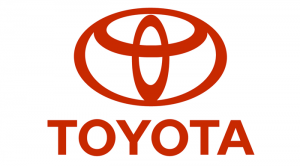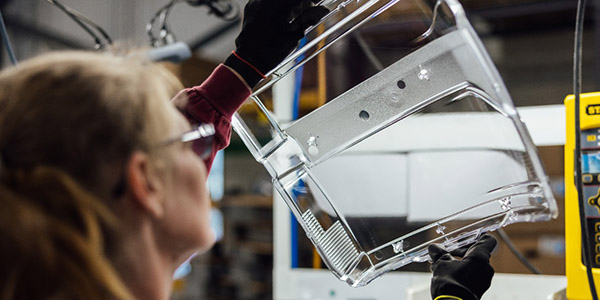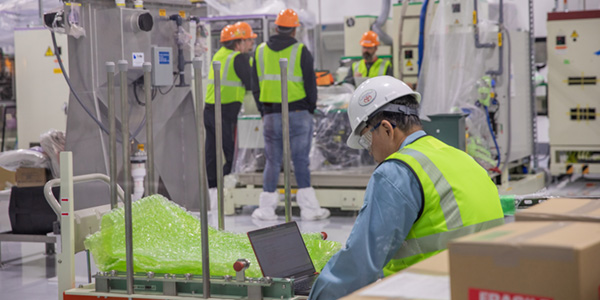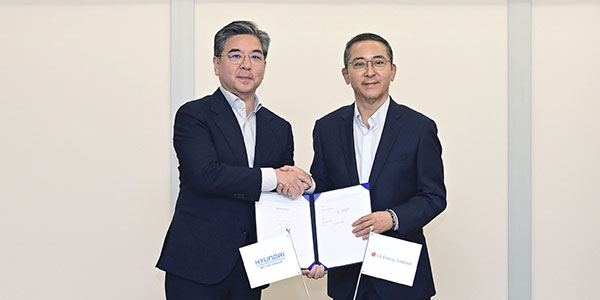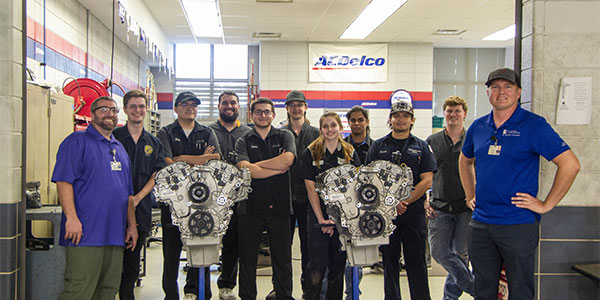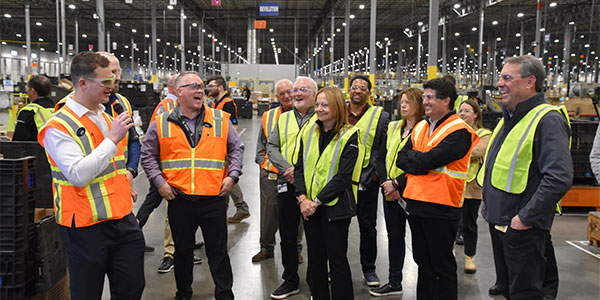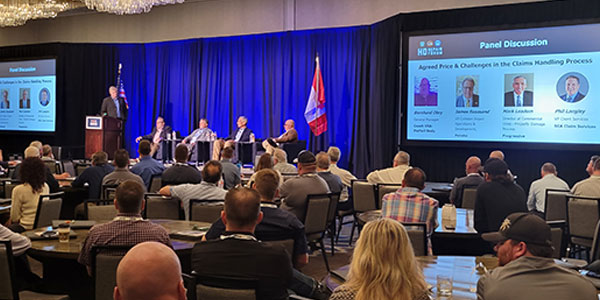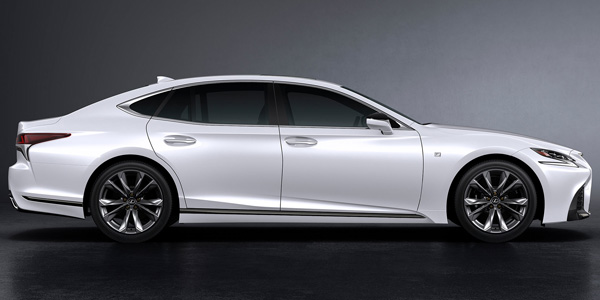
When the new Lexus LS hits showrooms this fall, it will offer a slew of safety features aimed at eliminating traffic casualties, Toyota said.
The automaker’s flagship luxury model will combine the well-established Lexus Safety System + with the Lexus Safety System +A, the latter of which “provides advanced pre-collision support and sophisticated driving assistance,” according to Toyota.
“The LS also will come with other technologies for supporting safer and more-secure driving in a broad range of situations,” Toyota added. “Support has been designed to be clear and intuitive, such as by providing the driver with information ranging from support status notifications to information on vehicle behavior during safety feature operation via a large head-up display (HUD) and a multi-information display.”
Features in the Lexus Safety System + include:
- Pre-collision system with pedestrian detection function
- Dynamic radar cruise control
- Lane-departure alert/lane-keeping assist
- Automatic high beam
The Lexus Safety System +A adds:
- Pedestrian alert – “A world-first technology that specifies the direction of the presence of a pedestrian,” according to Toyota. With Pedestrian Alert, if there is the possibility of collision with a pedestrian ahead, the direction of the pedestrian’s presence is shown in an animation via the large color HUD.
- Active steering assist – Determines when there’s a high possibility of collision with a pedestrian in the lane of travel or with a continuous structure, such as a guardrail. If the system also determines that it’s difficult to avoid a collision with brake control alone but that it might be avoided with steering control, the system assists in collision prevention or damage reduction through automatic steering control in addition to activating an alert and applying the brakes.
- Lexus CoDrive – Adds lane-change assist to the basic functions of dynamic radar cruise control and lane-tracing assist to provide steering support that’s in line with the intentions of the driver and lane-changing support on highways or motor-vehicle-only roadways. “By providing seamless driving support on roads with many curves or in traffic jams, Lexus CoDrive largely decreases driver burden,” Toyota explained. “It coordinates with the LS’s large HUD and multi-information display to clearly notify the driver of the state of support provided.”
- Lane-tracing assist – Provides lane-keeping support by way of steering control when adaptive cruise control is in operation. The system uses a camera to provide lane-line detection, and traces the path of the vehicle ahead to enable assistance even when lane lines cannot be recognized, such as in low-speed driving in congestion when there’s little distance to the preceding vehicle. If the speed of entering a curve is found to be too fast (based on navigation data), the LS’s HUD and multi-information display alert the driver, and the vehicle is automatically slowed down.
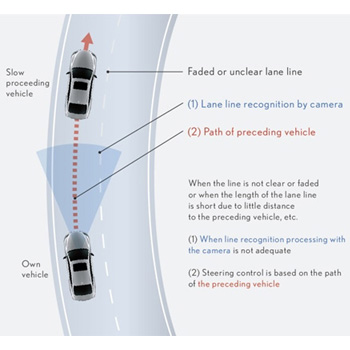
- Lane-change assist – Uses driver manipulation of the turning signal as a cue to activate, supports lane changes by monitoring the surrounding road environment and, at the appropriate timing, controls steering, as well as acceleration and deceleration.
- Driver emergency-stop assist – If non-operation by the driver continues during use of lane-tracing assist on a motor-vehicle-only roadway, driver emergency stop assist supports the driver through audio and visual alerts and gentle deceleration. It then activates the vehicle’s hazard lamps and horn to alert those outside the vehicle to help prevent or reduce damages to the vehicle or to others, while slowing and eventually stopping the vehicle within its lane. After stopping, it unlocks doors and activates an automatic HELPNET connection for a rescue request, contributing to early driver rescue.
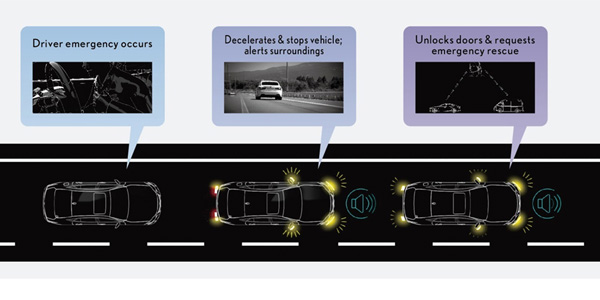
- Two-stage adaptive high-beam system – With eight LED lights at the top and 16 below (on each side), the two-stage adaptive high-beam system provides optimal lighting by way of separate on/off control of each row of LEDs, enabling finer control of light strength and distance compared to the existing LED-based high-beam system, according to Toyota. This allows higher frequency of high-beam driving without blinding preceding or oncoming vehicles, thus improving nighttime visibility.
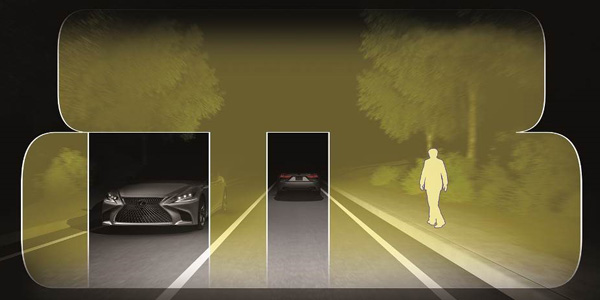
- Front cross-traffic alert – To help prevent collisions at intersections, front cross-traffic alert is designed to detect forward cross-traffic vehicles. It uses forward-direction radar to alert drivers of the direction from which a cross-traffic vehicle is approaching the immediate intersection. Alerts are displayed using the LS’s large HUD. If the vehicle proceeds regardless of the presence of an approaching vehicle in cross traffic, warnings also are issued by a buzzer and the LS’s multi-information display.
- Road-sign assist – Acquires road-sign information using a camera and navigation maps and then displays such using the LS’s HUD and multi-information display, thus reducing driver failure to recognize signs and encouraging safe driving, according to Toyota.
Other safety technologies include a digital rearview mirror, which shows the image captured by a rear camera on a built-in display in the rearview mirror.
“In addition to making rear safety checks possible by producing an image without objects that obstruct the view – such as the heads of rear-seat passengers – it contributes to enhancing visibility at night and in rainy weather, as well as when the rear-window sunshade is in use, and to protecting the privacy of rear-seat passengers,” Toyota explained.




